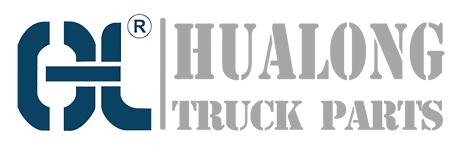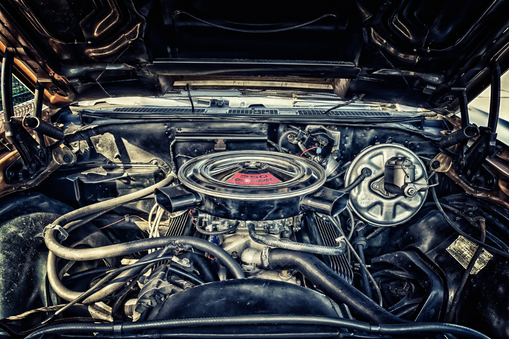Aftermarket and OEM Parts: What You Need to Know Before Purchasing Replacement Parts
When it comes to replacing parts for your vehicle, you have two main options: aftermarket parts and original equipment manufacturer (OEM) parts. Both options have their pros and cons, and understanding the differences can help you make an informed decision about what is best for your specific needs.
What is the Difference Between OEM and Aftermarket Parts?
Original Equipment Manufacturer (OEM) parts are parts made by the same company that made the original parts for your vehicle. They are designed to meet the manufacturer's specifications and are made to fit your specific make and model.
Aftermarket parts, on the other hand, are produced by third-party companies and are designed to fit a variety of vehicles. They are often less expensive than OEM parts, but the quality can vary widely. Some aftermarket parts are made to the same specifications as OEM parts and can provide good performance and reliability, but others may be of lower quality and may not last as long or perform as well as OEM parts.
In terms of fit, OEM parts are made specifically for your vehicle, so they are often a better fit and easier to install. Aftermarket parts, however, are designed to fit a range of vehicles, so they may not fit as well or work as seamlessly with your specific make and model.
When considering the difference between OEM and aftermarket parts, it's important to think about your needs and budget. If you're looking for a part that will provide the best fit and performance, an OEM part may be the best choice. However, if you're on a tight budget, an aftermarket part may be a good option. Just be sure to choose a reputable brand and research the quality and performance of the part before making a purchase.
keywords: oem vs. after market cost comparison analysis, auto spare parts prices compared, shopping for auto spare parts online)
Comparing Quality of OEM vs. Aftermarket Parts & Components
he quality of OEM (original equipment manufacturer) and aftermarket parts can vary greatly, so it's important to consider the specific part you need and your individual needs before making a decision.
In general, OEM parts are made to the manufacturer's specifications and are often made with higher quality materials and better manufacturing processes. This can result in a better fit, longer lifespan, and better overall performance of the part. Additionally, since OEM parts are made by the same company that made the original parts for your vehicle, they are designed specifically for your make and model and are often easier to install.
Aftermarket parts, on the other hand, are made by third-party manufacturers and are designed to fit a variety of vehicles. The quality of aftermarket parts can vary greatly, as some companies invest in high-quality materials and manufacturing processes, while others prioritize lower costs. In some cases, aftermarket parts can provide good performance and reliability, but in other cases they may not last as long or perform as well as OEM parts.
When comparing the quality of OEM and aftermarket parts, it's important to research the specific part you need and the specific aftermarket brand you're considering. Look for reviews from other users and consider the warranty offered by the manufacturer. Additionally, consider the intended use of the vehicle and your own expectations for performance and longevity.
keywords: non-original auto spare parts advantages disadvantages, buying car replacement components online pros cons)
Cost Comparison Analysis and Breakdown Of OEM vs. Aftermarket Car Parts
The cost of OEM (original equipment manufacturer) and aftermarket car parts can vary greatly, depending on the specific part and brand you are considering. In general, OEM parts tend to be more expensive than aftermarket parts, but the cost difference can vary greatly depending on the part and the manufacturer.
OEM parts are made by the same company that made the original parts for your vehicle, and are often manufactured with higher quality materials and better manufacturing processes. This often results in a better fit and performance, but also means that the cost of OEM parts can be higher.
Aftermarket parts, on the other hand, are made by third-party manufacturers and are designed to fit a variety of vehicles. The cost of aftermarket parts can vary greatly, as some companies invest in high-quality materials and manufacturing processes, while others prioritize lower costs. This can result in a wide range of prices for aftermarket parts, and the cost difference between OEM and aftermarket parts can be significant.
When comparing the cost of OEM and aftermarket parts, it's important to consider the intended use of the vehicle and your own expectations for performance and longevity. If you're using the vehicle for work or other demanding applications, the extra cost of OEM parts may be worth it for the better fit, performance, and longer lifespan. On the other hand, if you're using the vehicle for less demanding applications, or if you're on a tight budget, an aftermarket part may be a good option.
The Advantages and Disadvantages of Buying OEM or Aftermarket Car Replacement Parts
There are advantages and disadvantages to both buying OEM (original equipment manufacturer) and aftermarket car replacement parts.
Advantages of OEM parts:
Quality: OEM parts are made by the same company that made the original parts for your vehicle, and are often manufactured with higher quality materials and better manufacturing processes. This often results in a better fit and performance compared to aftermarket parts.
Compatibility: OEM parts are designed specifically for your make and model, which means they are guaranteed to fit your vehicle and work as intended.
Warranty: Many OEM parts come with a warranty, which provides coverage if the part fails or does not perform as expected.
Advantages of aftermarket parts:
Cost: One of the biggest advantages of aftermarket parts is the cost. They are often less expensive than OEM parts, making them a good option for those on a tight budget.
Availability: Aftermarket parts are often readily available, making it easier to find the specific part you need for your vehicle.
Variety: With a wide range of aftermarket parts available, it's often possible to find the exact part you need, even for older or less common vehicles.
Disadvantages of OEM parts:
Cost: The cost of OEM parts can be higher than aftermarket parts, which may not be affordable for some consumers.
Limited availability: In some cases, finding specific OEM parts can be difficult, especially for older or less common vehicles.
Disadvantages of aftermarket parts:
Quality: The quality of aftermarket parts can vary greatly, and some may not perform as well or last as long as OEM parts. This is because they are not made to the same specifications as OEM parts and may be made with lower quality materials.
Compatibility: Aftermarket parts may not fit your vehicle as well as OEM parts, which are designed specifically for your make and model.
Warranty: Some aftermarket parts may not come with a warranty, which can leave you without coverage if the part fails or does not perform as expected.
In conclusion, when deciding whether to purchase OEM or aftermarket car replacement parts, it's important to weigh the advantages and disadvantages and consider your individual needs and budget. Factors such as the intended use of the vehicle, your own expectations for performance and longevity, and your budget should all be considered when making a decision.
Why Are Original Equipment Manufacturer (OEM) Parts So Expensive and What Are The Alternatives?
Original Equipment Manufacturer (OEM) parts are often more expensive than aftermarket parts because they are manufactured by the same company that made the original parts for your vehicle. This often results in higher quality materials, better manufacturing processes, and a better fit and performance compared to aftermarket parts.
OEM parts are designed specifically for your make and model, which means they are guaranteed to fit your vehicle and work as intended. This added level of quality and compatibility can come at a higher cost, which can be a significant factor for consumers.
If you are looking for alternatives to OEM parts that are more affordable, aftermarket parts can be a good option. Aftermarket parts are made by third-party manufacturers and are designed to fit a variety of vehicles. They can be less expensive than OEM parts, but the quality and performance of aftermarket parts can vary greatly depending on the manufacturer.
Another alternative is to purchase used or refurbished parts. These parts have been used before, but have been restored to a like-new condition, and can be a cost-effective option.
It's important to keep in mind that when considering alternatives to OEM parts, it's important to consider the intended use of the vehicle, your own expectations for performance and longevity, and your budget. In some cases, the added cost of OEM parts may be worth it for the better fit, performance, and longer lifespan, while in other cases, an aftermarket or used part may be a more suitable option.

